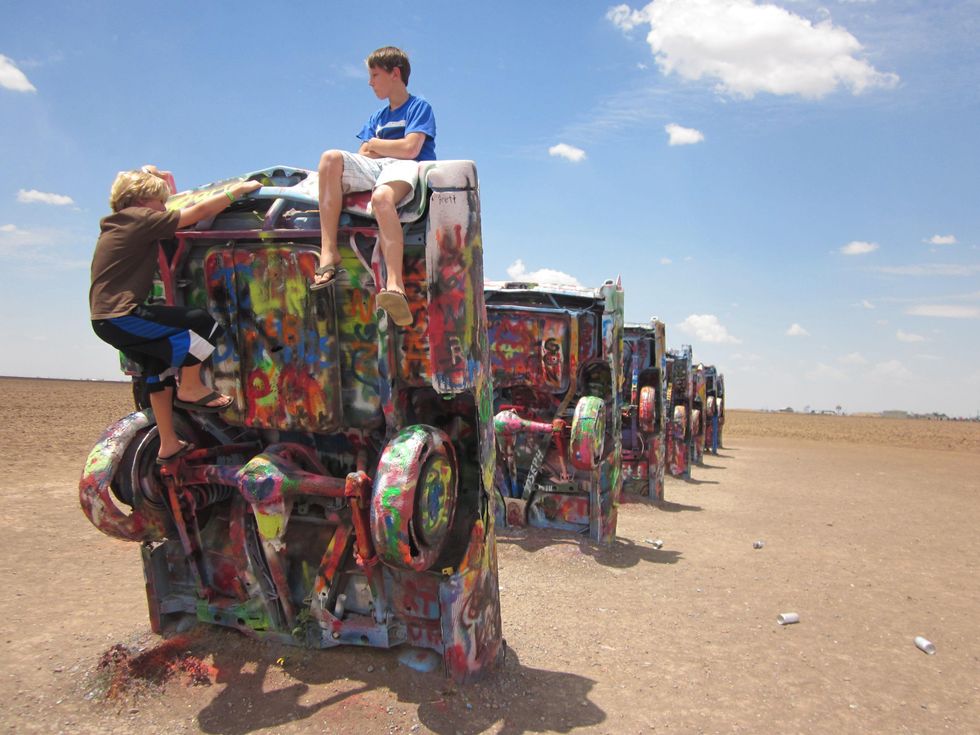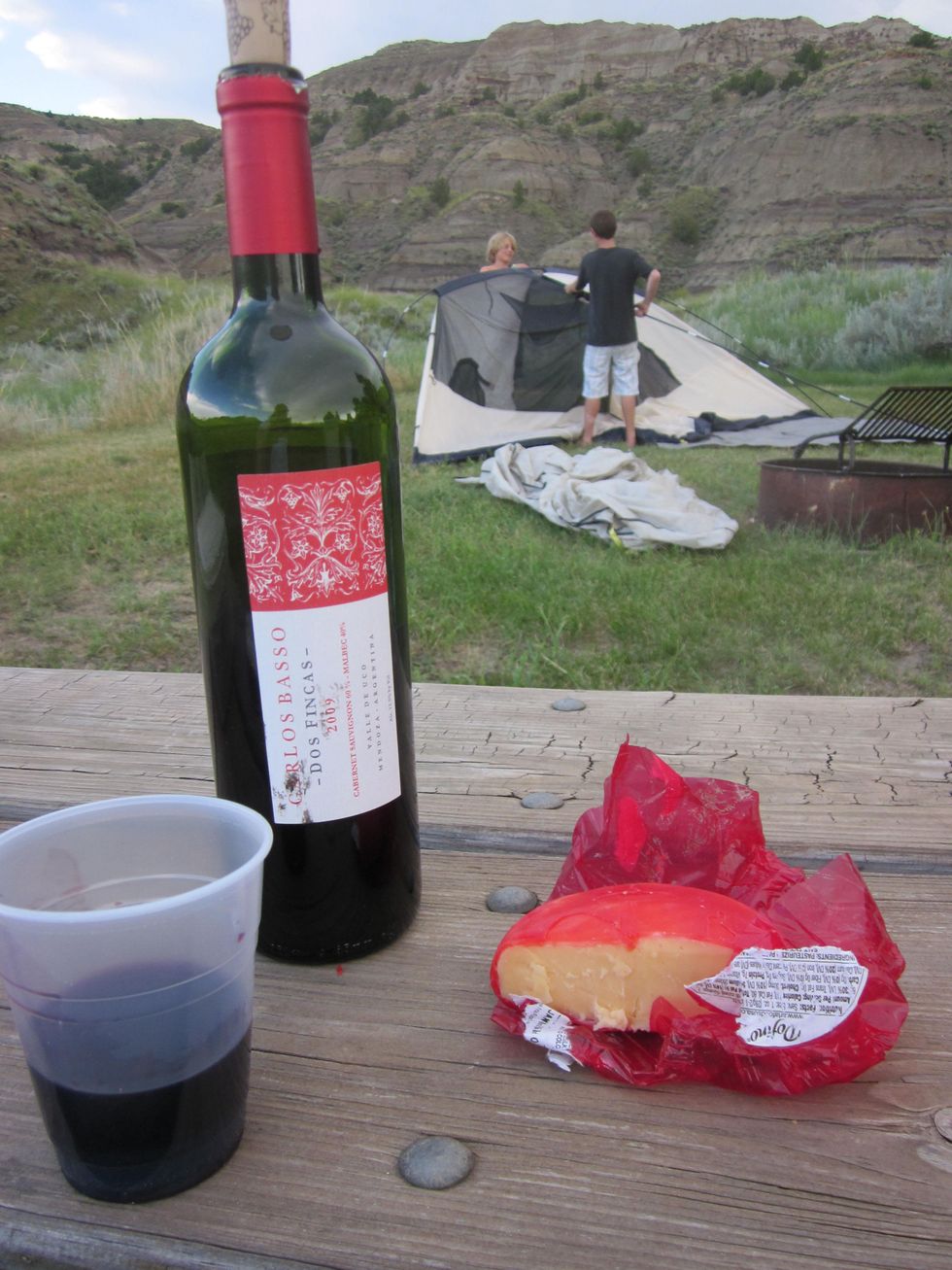I can think of no reason to be in Texas in July and August. Which is why for the past several years, our family has taken a three- to four-week-long summer road trip.
Decadent? Insane? Affordable, even as gas prices continue to rise?
All of the above.
Although I can easily work on the road with my laptop, my husband, who grew up flying first class as a Delta kid, is no fan of the extended road trip and has grown-up job vacation. So he usually meets us in one city and flies out of another two weeks later.
Here’s a rundown of our first four trips, which started in 2009 when the boys were 9 and 12.
- Tennessee, Kentucky, Ohio, Virginia, D.C., Philadelphia, New York City, upstate New York and Niagara Falls — 3,395 miles, 33 days, 11 states for a little less than $3,600.
- To and around Florida — 3,052 miles, 23 days, five states for about $2,600.
- New Mexico, Colorado to South Dakota (I promised a college friend back in the ’80s I’d someday visit him and had to make good), North Dakota, Minnesota, Chicago, St. Louis — 12 states, 23 days, 4,731 miles for about $2,500.
- Up to the Northeast and Canada last year — 19 states, 6,015 miles, 31 days, 19 states and way over budget at $4,500 (things like Broadway shows and whale watching in Maine are not budget friendly, in case you were wondering).
This year, we’re headed west: San Diego, Vegas, Zion National Park, Grand Canyon and Sedona. Without random detours — and there will be random detours — Google maps puts this one at just under 3,400 miles.
My kids have been to most of the continental United States, and we plan to knock three more states off the list this year. I’ve intentionally left Nebraska and Kansas to them. Their spouses and children can thank me later.
Why, you (and most of my sane and sober friends) ask?
Because, at ages 13 and 16, my kids request it. Because driving is always cheaper than flying. And because this is a sacred time. I believe the family road trip with teens and pre-teens is a lot like the family bed of their younger days. It’s cozy and creates a family unit, regardless of whether everyone’s comfortable or not.
With those thoughts in mind, here are my 10 rules of the road trip, most learned the hard way:
1. Never eat at a chain restaurant.
We broke this rule a couple of times one summer to satisfy my 10-year-old’s new love affair with Shoney’s. And we may relax the rules a bit at the end when we’re just trying to get home. But it’s a mistake.
One summer, we drove from Key West to Clearwater. After surviving an alligator tour by a sixth-generation Everglades City native, we were starving. We drove around, searching for options, and finally saw Curry Creek Cafe in Nokomis on the west coast, across from the Cheetah Flooring Outlet.
I was expecting small-town cafe, BLTs and the like. I wasn’t expecting David Arbuckle (the chef-owner who chatted us up a couple of times during our meal and has been written up in the New York Times) and his wife, Rofi, whose Indonesian heritage inspired their menu. That’s a treat that can’t come in a bucket or an all-you-can-eat breakfast buffet.
Tip: Never, ever eat at a restaurant with pictures of its food out front. That never works out well.
2. Put the kids in charge of the money.
When I traveled around Europe in my 20s, I had a budget of $30 a day. I kept meticulous notes in a small notepad about what I spent each day. I have the kids do the same thing, keeping track of all expenses and averaging them out so we can see how we’re doing.
Our budget is an average of $115 a day (lower when we’re camping in Kentucky or staying at a friend’s beach house, higher when we’re seeing a Broadway show in New York City). Suddenly, the kids are fine to eat in or pitch a tent when we get close to busting budget.
It becomes a game. The highlight of this way of traveling is the $0 day, as perfected on that trip to Europe. It is pure budget traveler joy.
3. It’s always preferably to pay to do instead of paying to sleep.
Rule 3b: There is no shame in Motel 6. On our Florida trip, we stayed at the Motel 6 (or just The 6, as we like to call it) twice on the way there, a boatel in Key Largo, a hostel in New Orleans and two more Motel 6s on our way home. All told, we spent $224 in lodging for our three-week vacation.
Friends in West Palm Beach were going to be out of town when we were there, so they offered their house. A friend in Key West gave us her apartment for a long weekend so we could crash there. And a family from church offered us their beach house near Clearwater.
How lucky and thankful are we that instead of spending thousands of dollars on lodging — or skipping the vacation entirely — we were able to parasail, see dolphins, snorkel and play on some of our country’s best beaches?
Now, I’m not promoting mooching. But if the opportunity arises, staying with someone or at someone’s place is a much more local way to travel. And the free aspect certainly is a bonus.
4. Always listen to the locals.
Any chance you have to ask a local — a friend or the girl pumping gas next to you — where to eat, play or shop, you should listen. Our friend in Key West got us a half-price parasailing just by walking in with us and saying hi to her friend who worked at the watersport business. She also took us to the best crêperie outside of Paris.
Traveling low to the ground, as Rick Steves would say, makes for the best kind of travel.
5. You need a rest day at least once a week.
This may involve a few hours of Shark Week, a trip to a bookstore, laundry, chess or general lazing about. Yes, vacation time is limited. But this will keep you sane during all the days of snorkeling, whale watching, lunch with friends and national park visiting. Rest is the idea on a vacation, right?
6. Travel days suck.
This is something I learned on my six-month trip to Europe. As I told the kids on the day we drove from Key West up to Clearwater, “Any fun we have today is just bonus. But don’t expect it.” Surprisingly, it was a wonderful day. But don’t get used to it.
Travel days often have more than their fair share of yelling, pouting and grumpy attitude. They are what they are so set your expectations somewhere between root canal and moving day.
7. If you’re just eating to sustain life, eat — and drink — in.
Sure, we eat some fabulous meals while on the road. But one night last summer we had an amazing meal on the porch under a rainbow for less than $20. Ribs, okra, Brussels sprouts, a nice Riesling for us, Jamaican ginger ale for the kids. You can’t get DQ for four at that price if you go out.
8. Be creative with the math.
When budgeting for a trip, few people consider what they would spend if they were at home. We’d be eating, doing at least a few fun things and using gas even if we were at home. So items like that come off the top of the budget from the start. Makes the total a lot more palatable.
9. Visit friends along the way.
Not only does this help with rules No. 3 and 4, it just makes the trip more fun. Some friends are obvious. But look up anyone you know and at one time in your life enjoyed spending time with.
My ex-boyfriend’s sister’s husband taught my kids to snorkel one summer. Weird? Maybe. But it was a great time. There’s little better in life than watching your old friends hang with your husband and kids — like different chapters of your book all coming together for a beautiful finale.
10. Pick a road trip theme song.
In our case, the song is often chosen by my rap-loving oldest son, so it isn’t family-friendly. Past road trip theme songs have included Usher’s Yeah and Tech N9NE’s Caribou Lou (for our Florida trip, natch).
My husband will someday use this as evidence against me should we ever end up in family court. But whenever things get tense in the car, I crank it up. And the road trip memories brought up by a good beat and inappropriate lyrics continue long after the trip odometer stops.
I can’t tell you how many bad moods have ended by playing these songs on a grumpy Tuesday in mid-February and the laughs they bring when we randomly catch them on the radio.
Their spouses and children can thank me later.









